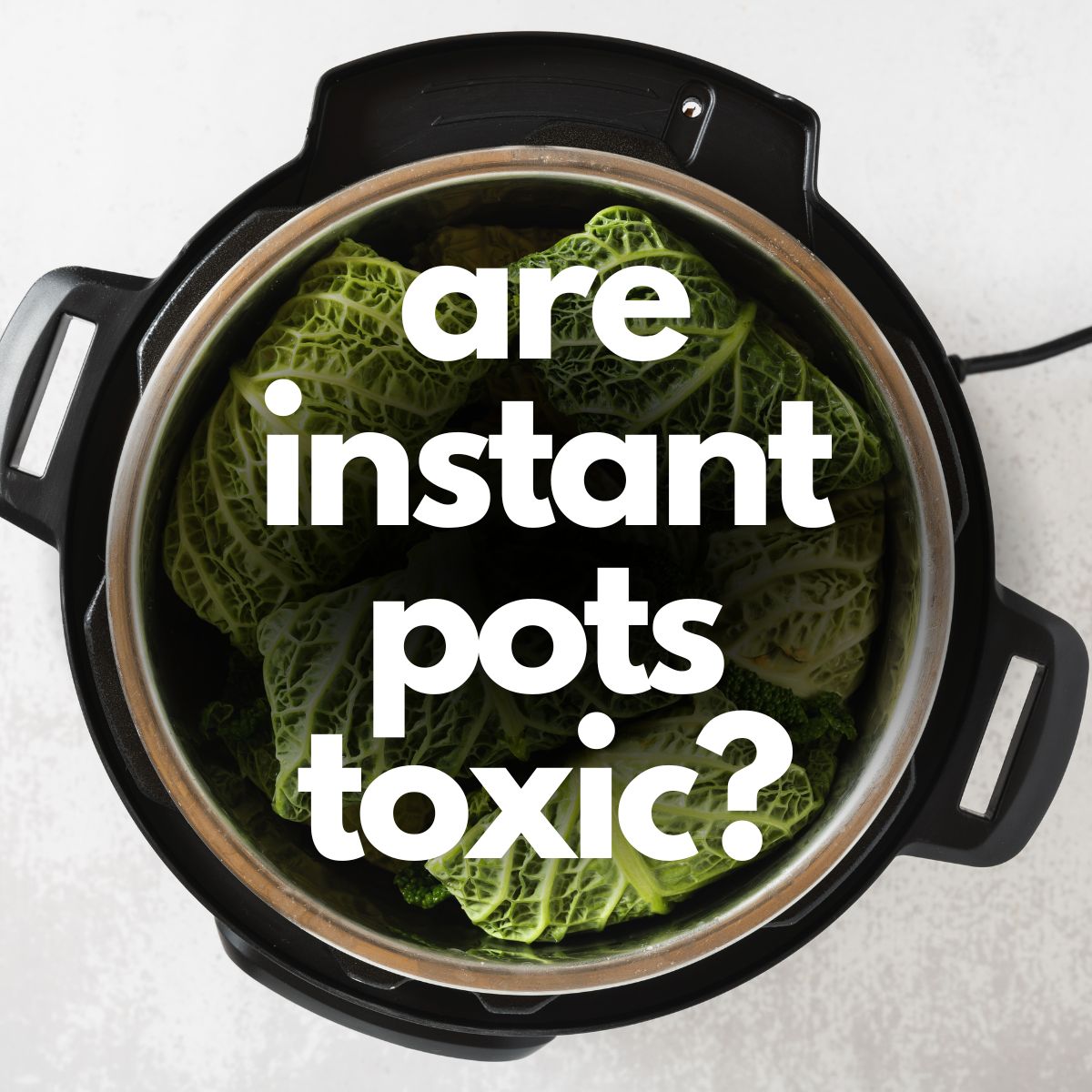
Are Instant Pots toxic? There's a lot of talk about the safety of these handy kitchen devices, focusing on their use of food-grade stainless steel and lack of harmful Teflon.
So, here's the scoop from my deep dive: Instant Pots are safe and free from toxic substances.
I'm here to break down the facts about the stainless steel used in Instant Pots, why it matters for cooking at high temperatures, and how to spot a high-quality pot.
Interested in the truth behind the safety of your Instant Pot pressure cooker and what makes it tick? Stick around as I debunk common myths and bring clarity to what you're really cooking with.
Jump to:
Unveiling the Safety of Instant Pots
Food-Grade Stainless Steel Construction
The heart of an Instant Pot is its stainless steel inner pot or liner. Unlike some pressure cookers, Instant Pot does not use chemicals to make the liner non-stick.
Instead, it uses stainless steel, a material utilized in restaurant kitchens for its non-toxic properties and durability. To be safe, you can also opt for a ceramic liner, another non-toxic material.
A stainless steel pot is non-corrosive and will not contaminate food. This material differs from non-stick coatings that weaken over extended use at high heat.
The coating eventually starts flaking, which winds up in food. You can cook highly acidic foods like tomatoes in an Instant Pot because the acid does not corrode the stainless liner.
Food-grade stainless steel is rated as 300 or 400 series, which means it is non-corrosive. Being non-corrosive means it can withstand high amounts of heat and acidic foods without degradation.
This also makes it easier to sanitize to prevent germ contamination. The material is not a non-stick coating but an alloy, so it will not chip or leach into foods.
Addressing Lead Concerns in Components
Now, let's discuss something less appealing-lead concerns. Lead-free components in cookware are a major concern of manufacturers, cooks, and anyone eating out of the pot.
High doses of lead are toxic to humans, and if lead leaches out of cookware, it will contaminate the food. Thankfully, organizations like the FDA and other safety boards have strict testing guidelines to prevent this, but consumers are always concerned about lead toxicity.
The World Health Organization has stated that lead levels up to 3.5 ug/dl are not toxic. Still, young children under five are more susceptible to lead poisoning because their organs are not fully developed.
That being said, lead poisoning from cookware is rare. To completely avoid potential health risks and save yourself hours of research, use stainless steel for cooking inside your home. This is the safest cookware, which is why quality appliances like Instant Pot brands use it for interior liners.
In 2017, Tamara Rubin scientifically tested the Instant Pot Duo 7-in-1 Electric Pressure Cooker. The results were great for the Instant Pot brand and for home cooks who use the pressure cooker.
- Stainless steel inner cooking pot: Non-Detect for Lead, Cadmium and Mercury
- Stainless steel lid (outside of lid): Non-Detect for Lead, Cadmium and Mercury
- Inner portion of steam release valve: Non-Detect for Lead, Cadmium and Mercury
- Anti-Block shield: Non-Detect for Lead, Cadmium and Mercury
- Power Cable: Non-Detect for Lead, Cadmium and Mercury
- Float Valve: Non-Detect for Lead, Cadmium and Mercury
- Steam Release: Non-Detect for Lead, Cadmium and Mercury
- Steaming rack: Non-Detect for Lead, Cadmium and Mercury
- Plastic tools: Non-Detect for Lead, Cadmium and Mercury
- Exterior pot: Non-Detect for Lead, Cadmium and Mercury
- Heating unit disk: 1,400 PPM lead +/- 90 and 46 PPM cadmium +/- 11
- Safety button in base of unit: 303 PPM for Lead +/- 36, Non-detect for Cadmium and Mercury
Expert Opinions on Non-Toxic Cooking Methods
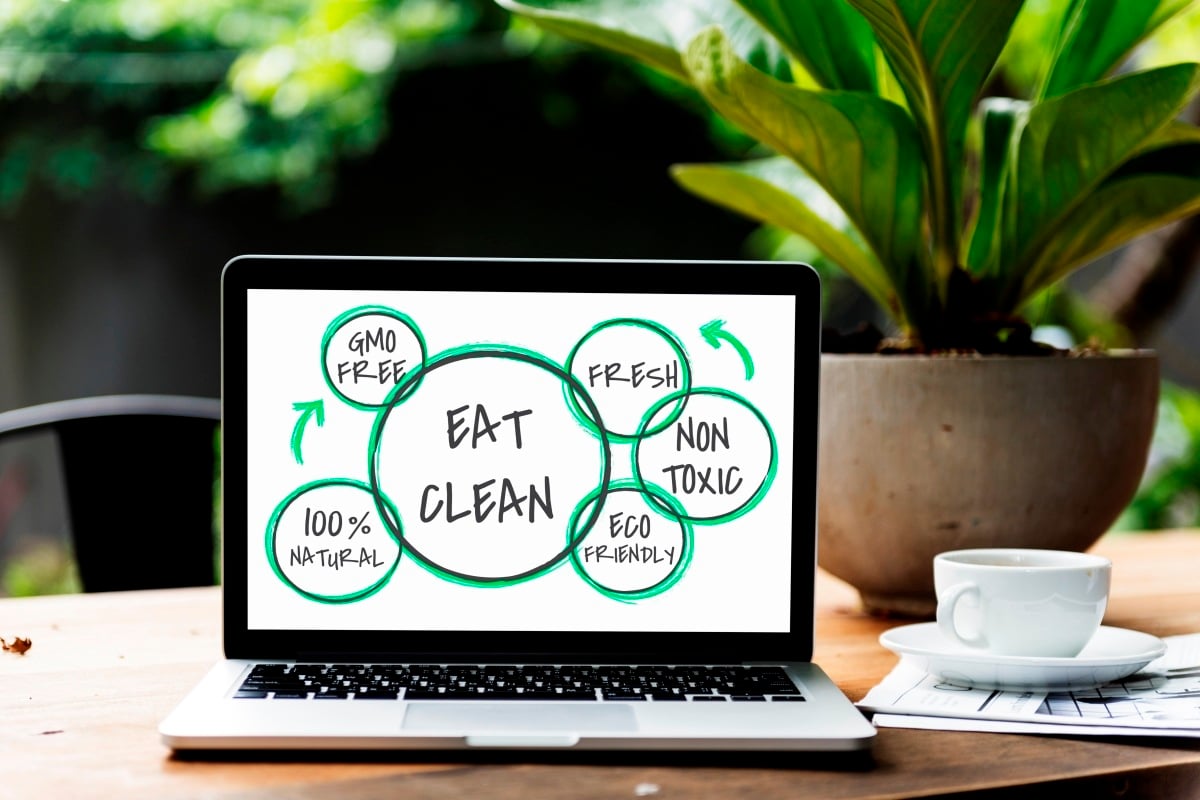
One of the leading specialists on lead in home cookware on the web is Tamara Rubin. A lead safety expert and creator of Creative Green Living, Tamara has tested numerous cookware through XRF testing. XRF testing stands for X-ray fluorescence spectroscopy, which determines the base composition of materials.
Instant Pot is one of the many household names Tamara has analyzed. While she did discover that certain elements of these appliances, like the power cord, contain trace amounts of lead, comparable to a coffee cup, she found the food-contact surface was safe.
Instant Pot is known for its safety measures on its brands, and this starts with the components it uses as well.
Comparing Similar Cooking Appliances
Pressure Cookers vs. Slow Cookers
| Feature | Pressure Cookers (Instant Pot) | Slow Cookers (Crockpot) |
| Cooking Speed | - Cooks food quickly, using high pressure to reduce cooking time. | - Takes 4-8 hours, allowing flavors to blend slowly and thoroughly. |
| Temperature | - Boils water at 250°F due to increased pressure, speeding up the cooking process. | - Cooks at lower temperatures, reducing the risk of burning food. |
| Nutrient Retention | - Retains more vitamins due to faster cooking times. | - Slower cooking times can lead to some nutrient loss, but flavors are deeply enriched. |
| Versatility | - Offers multiple functions, including pressure cooking, slow cooking, and more, all in one appliance. | - Primarily designed for slow cooking, with a focus on simplicity and ease of use. |
| Convenience | - Ideal for quick meals and busy schedules. Can significantly shorten cooking times for a variety of dishes. | - Perfect for "set it and forget it" meals, requiring minimal supervision. |
| Appliance Space | - Reduces the need for multiple appliances, saving counter space. | - Dedicated appliance that requires storage space but excels in slow-cooked meals. |
The Role of High Heat in Cooking
Cooking food at high temperatures is not only about preparing food faster but also enhances the meal's quality. The Maillard reaction is the caramelization of proteins at high temperatures, producing the classic browning and seared flavor of steak.
You can accomplish this effect with some kitchen appliances but not moist-heat cooking methods like a rice cooker or pressure cooking options. One of the benefits of an Instant Pot is that it has a sautee option to achieve the Maillard effect before moist cooking. Pot roasts and other meat dishes benefit from this option the most.
High temperature cooking affects some cookware and can wear off the coating if coated with a non-stick coating. Stainless steel cookware can withstand temperatures up to 600 degrees Fahrenheit, and Instantpots max out at 400 degrees, so you can use these high temperatures without worries.
Also read: Can I Use Instant Pot On Stove? Risks and Alternatives
Identifying High-Quality Stainless Steel
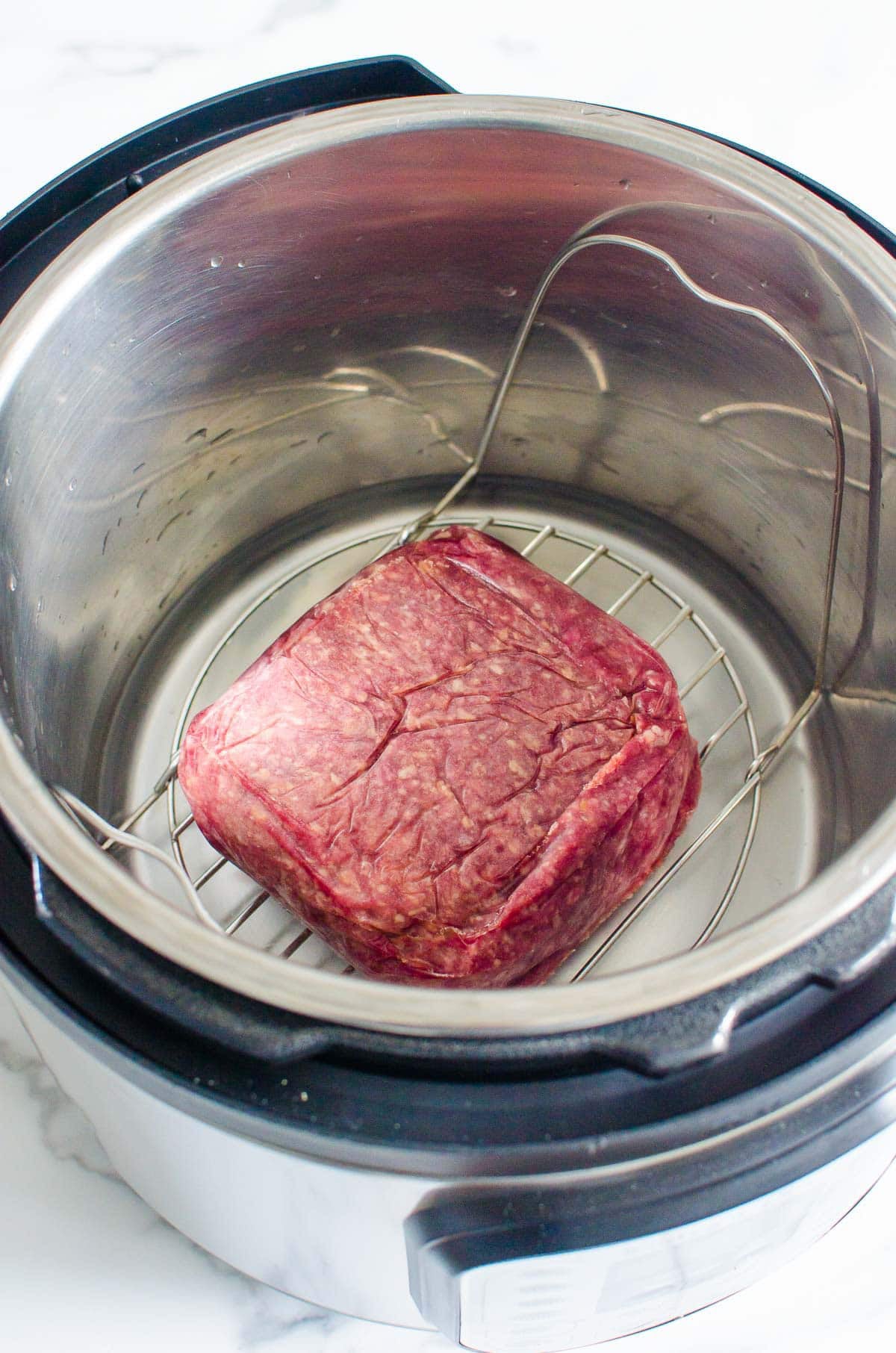
As mentioned earlier, food-grade cookware is graded on a scale, and the best options are the 300 to 400 series. The caliber of the cookware plays a part in food taste and the cost of the cookware. The higher the number, the more it costs. Lower grade stainless steel cookware is combined with nickel, a cheaper alloy. This alloy, like lead, can leach into food and create health concerns.
Plenty of research is available on stainless steel grades, which is a great place to start before purchasing new cookware. Knowing what you are cooking with is equally important to the food you are preparing. The Instant Pot brand uses series #304 food-grade stainless steel for the inner pot with a 3-ply bottom for even heating.
Also read: How To Set Instant Pot To High Pressure Easily and Quickly
Debunking Common Myths About Instant Pot Safety
"Are Instant Pots toxic?" is a question that's been stirring up concern among many, sparking various myths about their safety and construction. To set the record straight, let's tackle some of the most common myths surrounding Instant Pot pressure cookers and reveal the facts.
Myth: Instant Pots are lined with Teflon.
- Fact: The inner pot of an Instant Pot is crafted from food-grade stainless steel, an alloy that's both durable and non-toxic, with no Teflon in sight.
Myth: Instant Pots can lead to poisoning from heavy metals.
- Fact: The materials used in Instant Pots, including the stainless steel pot and mercury-free components, undergo strict testing to ensure they are lead-free and safe for food preparation.
Myth: The high pressure cooking process increases the risk of toxic chemical release.
- Fact: Pressure cooking in an Instant Pot is designed to be safe, with built-in features to prevent any risk of chemical leaching or toxic substance release during the cooking process.
Myth: Instant Pots use mercury in their heating elements or other parts.
- Fact: Instant Pot components, including the heating element, are mercury-free. Safety and health standards guide the design to ensure no harmful materials are used.
FAQs
No, Instant Pots themselves are not carcinogenic. There is no scientific evidence to suggest they cause cancer.
Lead is not a common component in Instant Pots. However, as with any cookware, it's advisable to check the materials used for your specific model.
Pressure cookers, including Instant Pots, are generally safe when used properly. Follow instructions to avoid misuse that could lead to burns or injuries.
Instant Pots and Your Health
As we wrap up our exploration, it's clear that Instant Pots stand out not just for their convenience but also for their safety. Far from being toxic, these modern kitchen wonders use food-grade materials and sophisticated cooking methods to keep your meals safe and nutritious.
Whether you're pressure cooking, slow cooking, or making yogurt, Instant Pots offer a lead-free, mercury-free, and hassle-free experience. They're a testament to how innovative cooking appliances can meld safety with functionality.
So, rest easy knowing your Instant Pot is a safe, efficient, and versatile ally in your quest for healthy, home-cooked meals.




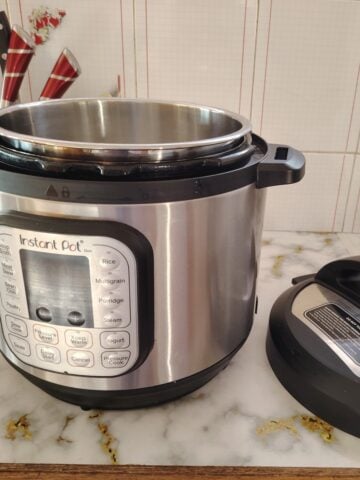
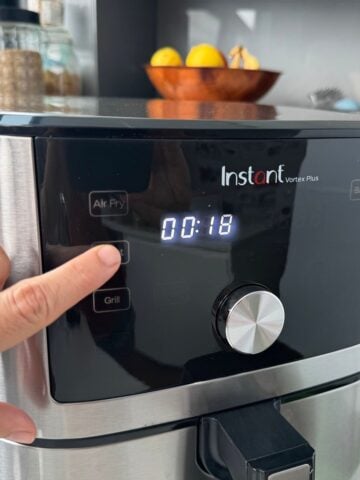



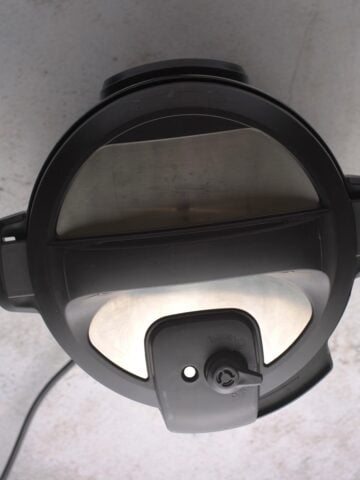
Tom B
Would someone mind leaving a link to safe IP container? The paint on the inside of mine is chipping and it’s time to replace it.
Ann Fabrizio
Hi Tom, typically the inner pot is stainless steal and should not chip, unless you have a ceramic one. I would recommend stainless steal. https://instantpot.com/collections/accessories/products/instant-pot-6-quart-stainless-steel-inner-cooking-pot-1